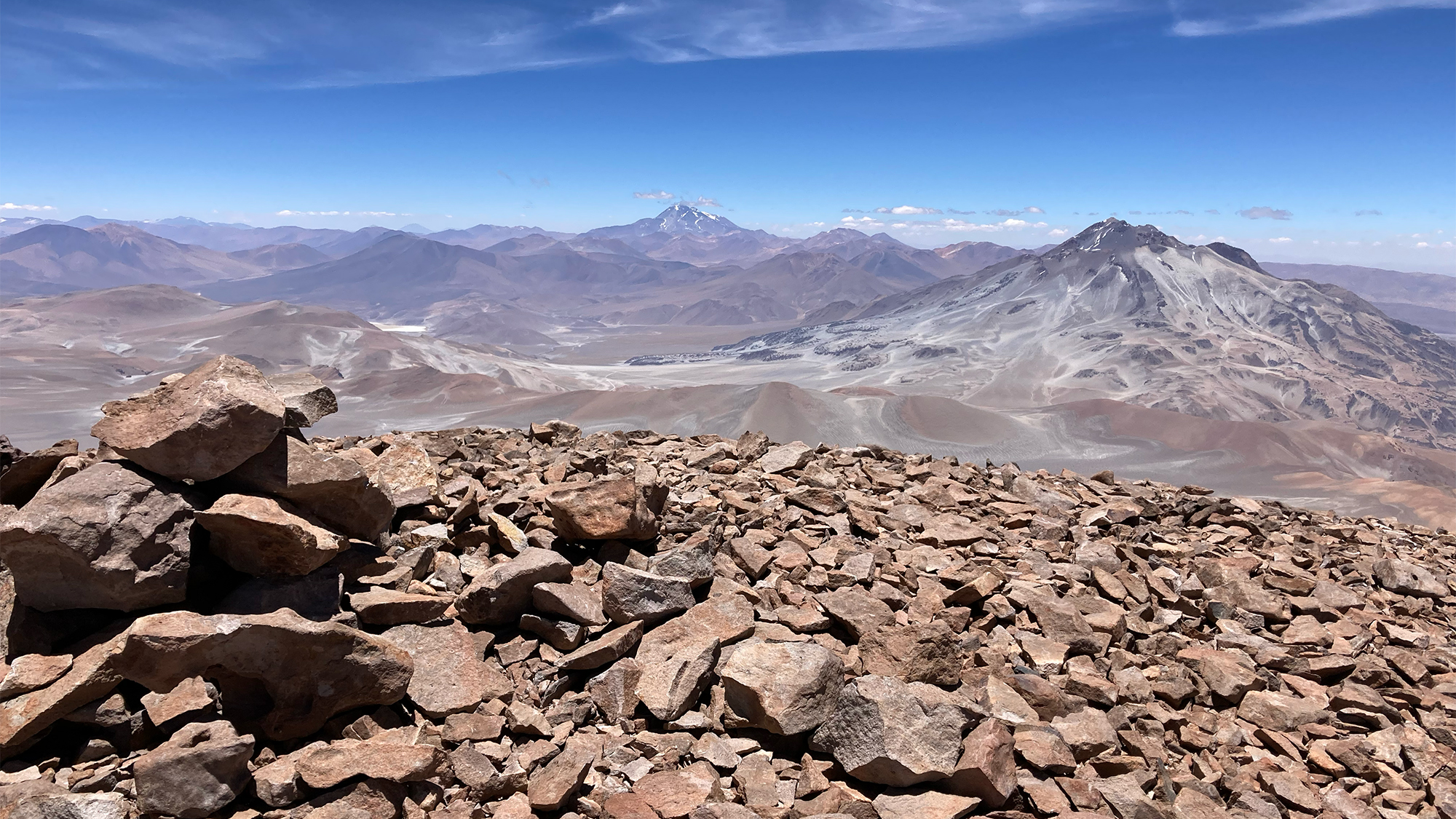

It’s a little slice of Mars right here on Earth. The volcanoes of the dry and arid Atacama desert in Argentina and Chile climb roughly 20,000 feet above sea level, with blistering winds, parched conditions, and freezing temperatures. However, a team of biologists who discovered a living two ounce leaf-eared mouse three years ago, have now found multiple mummified mice in these extreme conditions. The findings are described in a study published October 23 in the journal Current Biology.
[Related: Male mice are utterly terrified of bananas.]
“The most surprising thing about our discovery is that mammals could be living on the summits of volcanoes in such an inhospitable, Mars-like environment,” study co-author and University of Nebraska, Lincoln evolutionary biologist Jay Storz said in a statement. “Well-trained mountain climbers can tolerate such extreme elevations during a one-day summit attempt, but the fact that mice are actually living at such elevations demonstrates that we have underestimated the physiological tolerances of small mammals.”
Finding freeze-dried mummy mice
As far back as the 1970s and 1980s, archaeologists reported seeing mouse cadavers at these extreme heights. The assumption was that they naturally must have hitched a ride up the summit with the Incas. These sites are considered sacred to the Inca and the belief was that they could have been brought up along with firewood up the slopes or potentially were offered up as sacrifices.
“You can’t fault the archaeologists for thinking this way, because what other explanation is there?” said Storz. “Nothing could be living up there, so they had to have been brought there.”
Inadvertently, doubts on the mice as hitchhikers theory were cast early in 2020. Storz and his friend and fellow mountaineer Mario Pérez Mamani, captured a live specimen of leaf-eared mouse atop the 22,000-foot peak of Llullaillaco, a volcano on Chile-Argentina border.
Along with the discovery of more live mice, they’ve now found 13 mouse mummies on the summits of three neighboring volcanoes—Salín, Púlar, and Copiapo—all close to four miles above sea level.
“These are basically freeze-dried, mummified mice,” Storz said.
It’s all relative
The frozen in time state also helped preserve their DNA and crucial genetic information. Alongside collaborators from the University of Montana, Storz compared the genetic variation among the leaf-eared mice collected in the lowlands, midlands, and highlands of Atacama Desert. This cross-habitat zone analysis can help trace the evolutionary history of animal populations that are separated by physical barriers, distance, or altitude.
[Related: 1,000-year-old mummy with full head of hair and intact jaw found in Peru.]
The team questioned whether the mummified mice living on top of the Andes Mountains may be a different subpopulation of the leaf-eared rodent that has a colonization history that differs from their more low-land dwelling peers. According to Storz, they found that the mice from the summits and those from the flanks or the base of the volcanoes in the surrounding desert are “one big happy family.”

Two pairs of the leaf-eared mummies found on Salín were also closely related, possibly siblings or parents and offspring. Along with the discovery of the live mouse burrows, the equal ratio of males to females found among the mummies, also points to the leaf-eared mouse living in and not just touring these summits.
‘How in God’s name is anything living up there?’
Puna de Atacama is among Earth’s most inhospitable places and NASA has visited the Atacama to practice for future missions on Mars. Its less than 0.6 inches of annual rainfall make it a good analogue for the Red Planet and a rovers designed to dig in Martian soil to search for microbial life have been tested here.
“Even at the base of the volcanoes, the mice are living in an extreme, Martian environment. And then, on the summits of the volcanoes, it’s even more so. It feels like outer space,” said Storz. “It just boggles the mind that any kind of animal, let alone a warm-blooded mammal, could be surviving and functioning in that environment. When you experience it all firsthand, it even further impresses upon you: How in God’s name is anything living up there?”
To learn more, Storz and team have established laboratory colonies of leaf-eared mice that were collected from various altitudes. They acclimated each group to conditions that simulate the Puna de Atacama, hoping to pinpoint the physiological adaptations that the rodents cope with life at the extreme. They’re are also continuing mountaineering surveys of small mammals living on high Andean peaks in Argentina, Bolivia, and Chile.
They believe it possible that avoiding predators such as birds of prey, foxes, mountain lions, and smaller cats could be what’s driving the mice to live here.
“But why they’re ascending to these extreme elevations is still a mystery,” Stoz said.
